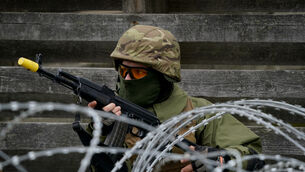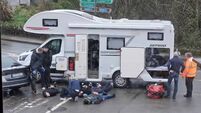Israel begins withdrawal from Gaza Strip
It was trhe beginning of Israel's pull out from the Gaza Strip after 38 years of occupation.
Police and soldiers waited patiently in the sweltering sun and avoided confrontations at the behest of their commanders. At one point, a sobbing settler pleaded with a general not to evict him before the two men embraced.














